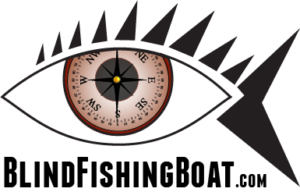Up-date on Audible Navigation Technology for Blind and Low Vision Fishers
Hello Lawrence,
My O&M specialist has just directed me to you and your web site. Your passion for fishing is impressive, and I am always trying to learn more. Being retired, now, I am trying to do less work and spend more time on the water. After graduating from Auburn University with a Masters in Aquaculture, I have spent the last 30 years in my fish hatchery business. Declining vision forced me to retire a couple of years ago. My home in south Alabama is surrounded with about 23 acres of fishing ponds. I have recently bought a 10 foot pontoon boat and have been trying to learn how to navigate the ponds. I have a cheap talking compass and a Trekker Breeze, but still get turned around.
I need to read more of your tips and become more efficient. The blind fishing tournaments that you mention sound great, and I would be interested in attending. Please let me know how I can best learn fishing tips, navigation tips, and about upcoming events.
Sincerely,
Dirk
Hi Dirk,
The thing with GPS is that you need to be moving at a steady speed no slower than an average walk. Any slower and the error of margin for mistakes with GPS results in random directions that will have you spinning in circles – learned this the hard way.
It’s possible to keep a fairly straight course using the Breeze or other GPS systems, but you won’t be getting anywhere in a straight line – more like stitching a seem.
To be more precise a good audible compass helps. Until recently, none existed. However, Frank and his son Max in the UK have recently developed two models. The one you want is the simpler of the two, the MaxPAC Buzz. Check it out at:
http://www.blindsailing.net/AudioCompass.htm
The MaxPAC will allow you to set a heading with the compass and then stay on course using the two different tones and beep rates. You still need to have an idea where you are going, which is where the Breeze GPS unit comes into play.
Lastly, listen to the sounds from shore. There’s always something going on that you can use as a reference. Even if it’s just the birds in the trees, you will always know where the shore is – just follow it around. Of course, this means no gas motors. Rowing is also out. An electric transom motor like Minn Kota’s Traxxis is great for your punt. Or, get into a HobieCat kayak like the 12 Pro Angler equipped with the Mirage peddle drive system. This way your legs do the work leaving your hands free to feel for the bite. The Mirage drive means you won’t be pulling the kayak off course with uneven paddling, and you can make slight course corrections with the hand operated rudder which can be set and left without the rudder changing angles on its own.
The final system you might want to invest in is a Minn Kota Terrova with the I-Pilot. This is an electric motor for the bow. It has GPS and digital compass technology built right into the head of the motor. You control it with a wireless remote. You can select the anchor lock feature, which allows you to have the Terrova automatically keep the boat within a short radius of your selected point – a range of about 10 feet. It also allows for up to six 2-mile long tracks to be recorded and saved and then played back later in either direction. Just think of it, a two mile stretch of your favourite shoreline navigated by the boat with no assistance from you, and then reversed to get you back to the start. Amazing technology, but you still want to be capable of navigating yourself should the I-Pilot technology mal function.
I hope some of this satisfies your request for information. Sounds like you have the perfect testing grounds to work with – private Bass filled ponds of a reasonable size and no one else to worry about bumping in to (LOL). Avoiding bumps is possible by sticking a Mini Guide on the helm and connecting it to a small speaker.
Take care Dirk, and let me know how you make out. Come on up to Canada some day for some fishing – would love to take you out.
Best, Lawrence
